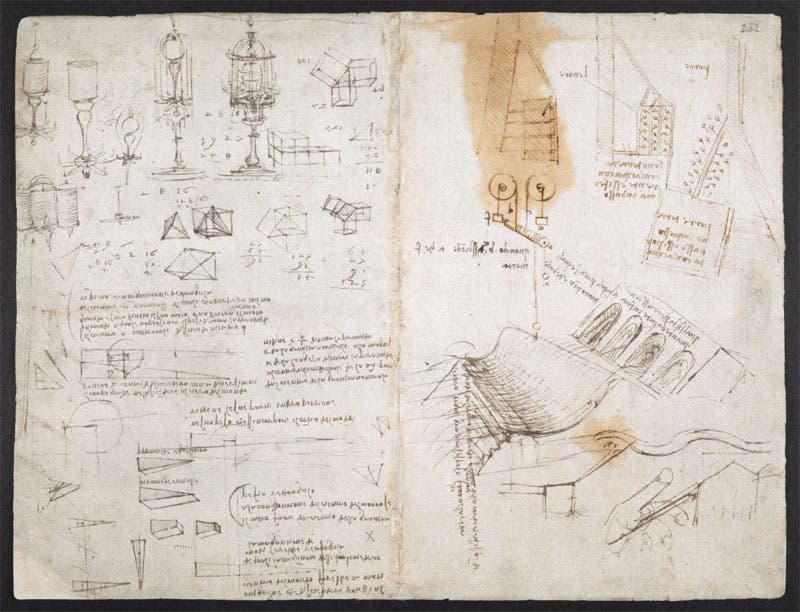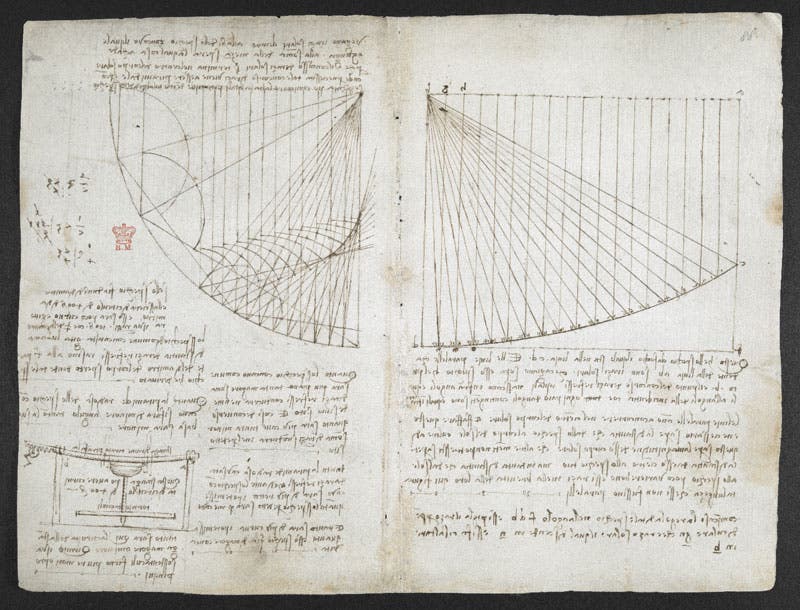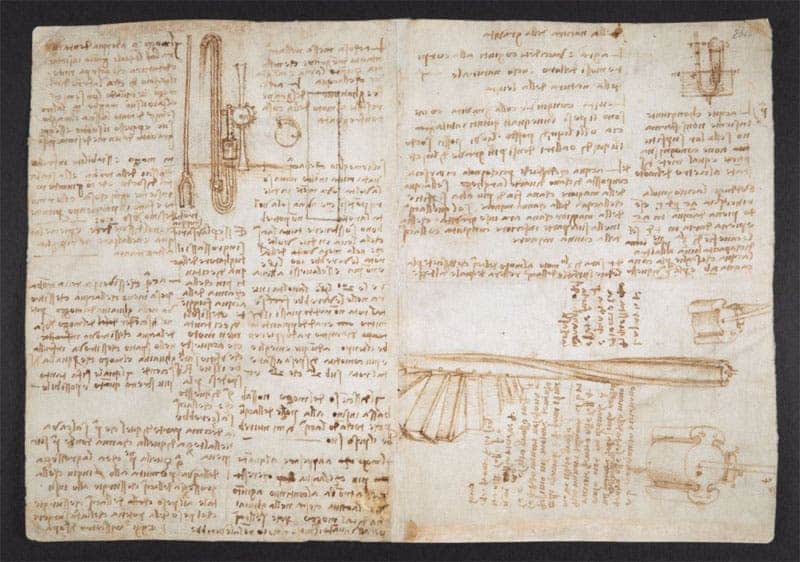Few people can claim to have had such a strong impact as Leonardo da Vinci. A brilliant artist and scientist alike, Leonardo left behind a legacy on which the dust will never settle. To this day, people are looking through his old notebooks to find inspiration and try to understand his genius. Now, those people will be able to access a valuable trove: Leonardo’s sketches and personal notes.
The British Library has fully digitized one of da Vinci’s visionary notebooks, ‘The Codex Arundel’. The 283-paper codex contains a number of treatises on a variety of subjects, including mechanics and geometry, written from 1480 to 1518. The bound notebook was purchased by the Earl of Arundel in Spain and has since passed into the possession of the British Library.
The core of the notebook is a collection of materials that Leonardo describes as “a collection without order, drawn from many papers, which I have copied here, hoping to arrange them later each in its place according to the subjects of which they treat.”
They’re not really arranged to this day. It was characteristic of Leonardo do bind together all sorts of seemingly scrambled ideas and concepts, and to add more and more to the collection as the years went by.
You can fully access the notebook in high resolution, for free, but don’t expect it to be an easy read. The Codex Arundel is written in Leonardo’s typical right-to-left mirrored handwriting. Leonardo often wrote with this way, and it’s not clear exactly why. Leonardo was often described as writing and painting with his left hand, so it’s likely that writing this way kept his hands clean (writing left-handed from left to right would smudge the ink). Other, more imaginative ideas, say that this made it harder for his rivals to copy his ideas.
Whatever the reason may be, it makes for a rather difficult reading. But if you get through it, it’s really rewarding. Leonardo’s creativity strikes you through the centuries’ old manuscript, and the fact that we can read them online, taking advantage of modern technology, is only fitting.
[ALSO CHECK OUT] Leonardo Da Vinci’s to-do list from 1490 makes you look like a pleb












